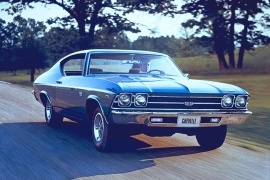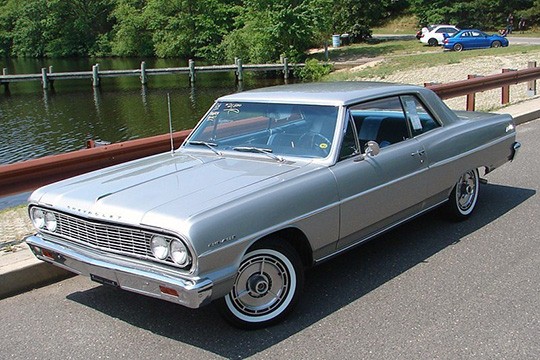CHEVROLET Chevelle Models/Series Timeline, Specifications & Photos
First production year: 1963
Engines: Gasoline
Body style: Coupé (two-door)
The second generation of the Chevelle was introduced in 1969, and the SS version received one of the most powerful V8 engines made by Chevrolet in that era.
After Ford introduced the fifth generation of the Fairlane in 1966, GM prepared a proper answer: it was the Chevelle. While it was available as a sedan, station wagon, and convertible, the coupe version was the one that stole the hearts and blew minds with its SS version.
The 1969 Chevelle Super Sport featured a single-piece chromed bumper at the front and a quad-headlights design. Its SS badge took center stage on the raked-forward grille cast in ABS plastic. Its long, curved lines in the “Coca-Cola” bottle design made the car look elegant and muscular. In the rear, the carmaker installed more prominent taillights and a chromed, fat bumper. A dual exhaust system was designed especially for the vehicles fitted with the 396 engine.
The interior was large enough for up to five passengers. Unlike most of the other cars from those times, the Chevelle featured numerous safety systems such as three-point seatbelts and an energy-absorbing steering column. A pair of bucket-seats was offered as an option for the front passengers.
Under the hood, GM dropped a big-block V8 396 engine. In the SS trim version, it offered an official 350 hp, but that was underrated. Its track performances showed something else. Another improvement for the SS was the braking system with discs in all corners. A four-speed manual was fitted as standard, while a 3-speed automatic was on the options list.
Chevrolet introduced the first generation of the Chevelle in 1964 and produced it in various shapes and sizes, but the one that ignited enthusiasts' minds was the Malibu SS version.
It was the start of the muscle-car era for the American car market, and Chevrolet was one of the brands that noticed the public's appeal for high-powered vehicles. The SS badge, which came from Super Sport, was quickly displayed on several models made by the bow-tie brand, such as the Impala and the Chevelle Malibu.
The squared-looking bodywork with simple, straight lines reminded customers that what was more important was hidden underneath the hood. But still, there were enough attractive shapes to lure them into Chevy's showrooms. At the front, the quad-headlight design with a chromed single slat adorning the grille was a good reason. On the sides, depending on the production year, the car sported the Malibu SS badges on the rear quarter panels or on the front fenders. Since it was offered as a muscle car, it had just two doors.
Inside, the Malibu SS boasted vinyl-covered seats, and rear bench, and a center console for versions fitted with the four-speed Muncie manual gearbox or the two-speed Powerglide transmission. To further emphasize the car's sporty character, it featured four dials inside the instrument cluster, with additional gauges for water temperature and an ammeter instead of warning lights. A tachometer was also available.
Powering this early muscle car was Chevrolet's 283 cu-in engine. Later, the 327 and the 396 versions became available.

